Sony Xperia 1 IV review
Two-minute review
It’s hard to know whether to class this Sony Xperia 1 IV review as an analysis of a consumer-grade smartphone or a professional-level creativity tool designed for working artists As the former, it’s almost impossible to recommend, but if you treat it as the latter, it’s hard to put down.
This is an obscenely expensive phone that just can’t compete with rivals like the Samsung Galaxy S22 Ultra or iPhone 13 Pro Max for ‘average’ phone fans - it has a clunky design and unassuming software, and it doesn’t rely on AI to take vibrant and captivating photos.
But Sony knows that, and it isn’t aiming at the kind of consumers who buy the first handset they see on a store shelf. No, the Xperia 1 series is aimed at professional ‘content creators’ (for lack of a better, not-cringe-inducing term) with a range of bespoke photography, videography and, new to the Mark 4, audio recording features.
This is the fourth-gen version of Sony’s top-end line of Android smartphones (what gave it away?), following on from the Sony Xperia 1 III, and accompanied by a mid-range Xperia 10 IV. These premium devices rarely have huge changes over their predecessors. Sony instead opts to tweak specs and bring useful new features for creatives.
The big new feature here is the continuous optical zoom, with the telephoto lens moving between 3.5x and 5.2x without having to use digital zoom (which is basically just cropping). It’s a really useful mode for photographers who like long-range shots.
Other big upgrades include the rollout of 4K and 120fps video recording on the three rear and one front-facing camera, an audio recording app that lets you layer, clean and mix sound, functions for mobile games streaming and a bigger battery than before.
Sony’s phones are already considered some of the best devices for creatives, and the new additions to the Xperia range ensure that Sony is keeping head-to-head with Samsung and Apple for that crown - though admittedly the Xperia’s camera is designed for more technically-minded users than the Galaxy or iPhone point-and-shoots.
There are also some rough edges that even creative users can’t overlook, which means we can’t give this phone a wholly glowing review - you’ve already seen that 4/5, haven’t you?
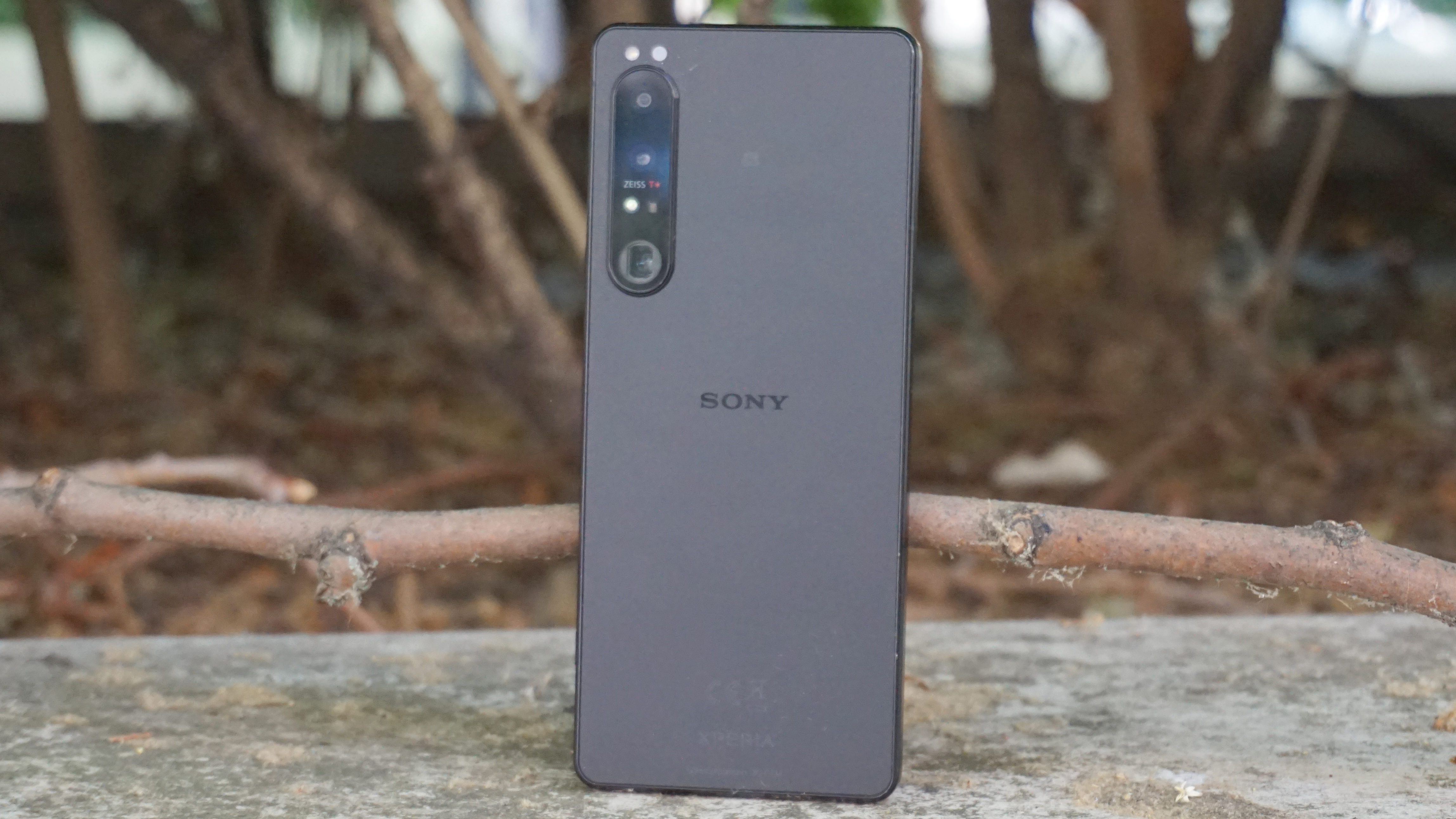
The big problem we found was that the side-mounted fingerprint sensor was incredibly inaccurate, and it failed to unlock the phone more times than it succeeded. This has been a consistent problem with Sony’s flagships and it boggles the mind that the company hasn’t fixed it yet.
There were also a few software issues, like video playback not working on some of the key video-recording apps, apps crashing and the inclusion of bloatware that we wouldn’t expect on a pricey device.
Yep, this is an expensive phone - it will even cost you more than some Ultra-suffix devices or foldable phones. Even our ‘price and availability’ section below isn’t for the faint of heart. Sure, you get lots of unique and useful creative features for that price, but given the cost of living crisis around the world, it seems a bit much. How many ‘starving artists’ have $1,600 to spend?
We enjoyed our time testing the Sony Xperia 1 IV, but likely wouldn’t recommend it to the vast majority of our friends, at least the ones who aren’t creatively inclined. But for the minority who’d enjoy the Cinema Pro apps, the continuous camera zoom or the 120fps recording, and could also afford that price tag, we’d wholeheartedly recommend this device.
Sony Xperia 1 IV price and availability
- Costs $1,599 / £1,299 - no Australia release
- Costs more than Samsung and Apple rivals
- Sells June 16 in Europe, September 1 in the US
The Sony Xperia 1 IV price is enough to put off all but the most dedicated buyers.
In the US, the handset costs $1,599.99, and that gets you a device with 512GB storage. In the UK it’ll set you back £1,299.99, which will net you 256GB storage. Sony hasn’t sold its last few generations of phones in Australia, so don’t expect a launch there.
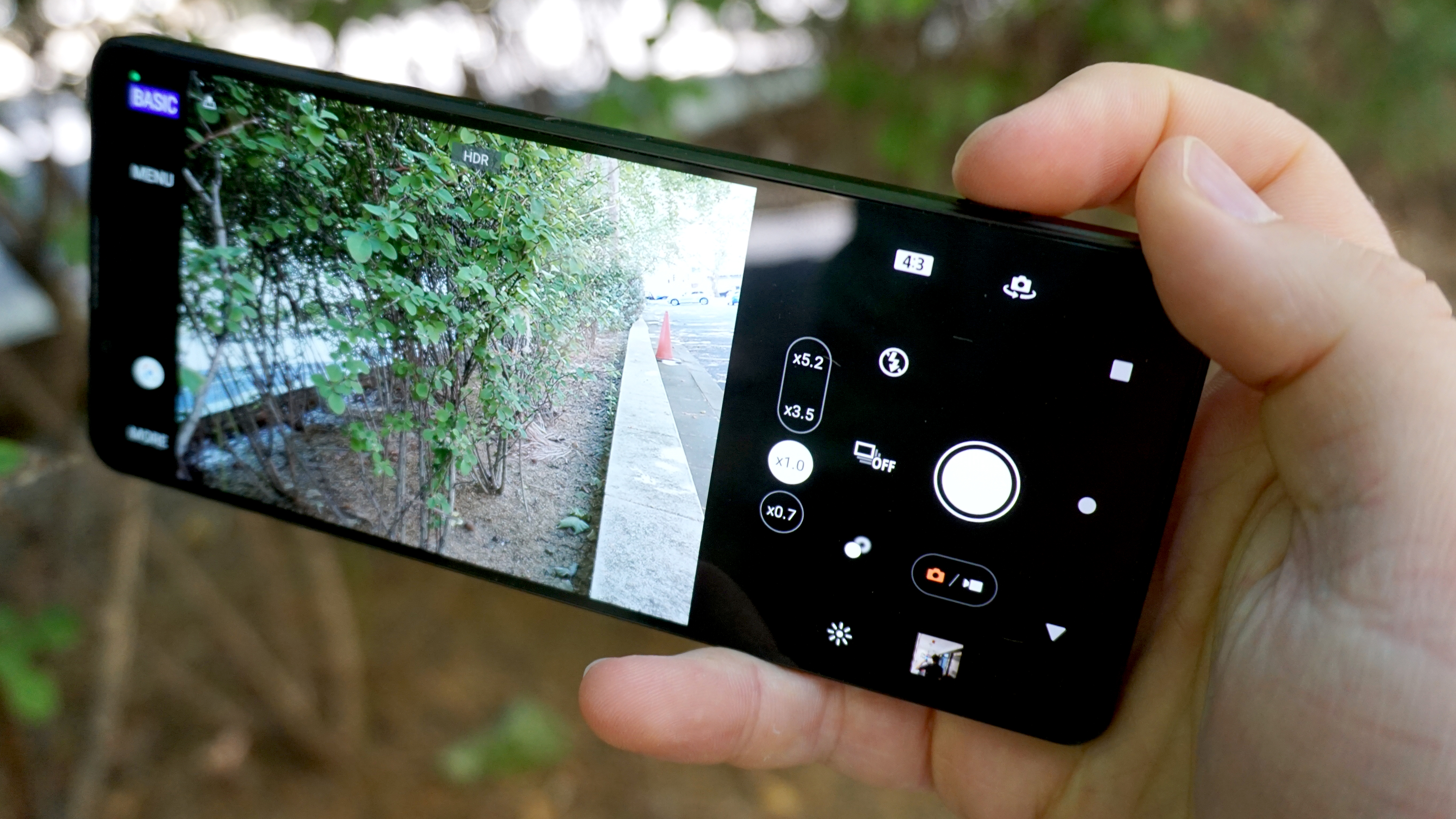
The phone costs more than its predecessor - the Xperia 1 III went for $1,299.99 / £1,199.99, and both regions got a 256GB device. And before you say anything - no, doubled storage space doesn’t justify a $300 price increase.
At that price, the Sony Xperia 1 IV is competing against the very best phones on the market. For context the Samsung Galaxy S22 Ultra costs $1,299.99 / £1,249 / AU$1,999 for 256GB storage and $1,399.99 / £1,329 / AU$2,149 for 512GB, while the iPhone 13 Pro Max is priced at $1,199 / £1,149 / AU$2,019 for 256GB and $1,399 / £1,349 / AU$2,369 for 512GB.
So in the US, the Sony is priced higher than similar-storage heavyweights, while in the UK it’s playing at their level.
Sony gave preferential treatment to Europe in its release of the Xperia 1 IV. It launched on June 16 there (including in the UK), while the US has to wait until September 1 to enjoy it. That may seem like a long wait, but this was actually a surprisingly short turnaround between launch and release compared to the company’s habits with previous Xperia releases.
- Value score: 2/5
Sony Xperia 1 IV design
- Angular display is uncomfortable to hold
- Retains 3.5mm headphone jack
- Shutter button is useful for photography
Both your eyes and your hand will tell you the same thing about the Sony Xperia 1 IV, that it’s a long, thin, angular smartphone that’s not going to win any design awards - especially the award for “biggest redesign from predecessor”.
Measuring 165 x 71 x 8.2mm, the phone is certainly tall, but it’s narrow enough not to stretch the hand, and it’s fairly light at 185g.
It’s not totally comfortable to hold, since its flat edges make phone quite angular, but at least it’s not as wide as many other smartphones we see.
As with most premium phones, the device is a glass sandwich with the sturdy Gorilla Glass Victus on the front and back, and a metal frame. It has both IP65 and IP68 certification, so it’s well protected against dust and brief submersions in water. You can pick up the device in violet, white or black.
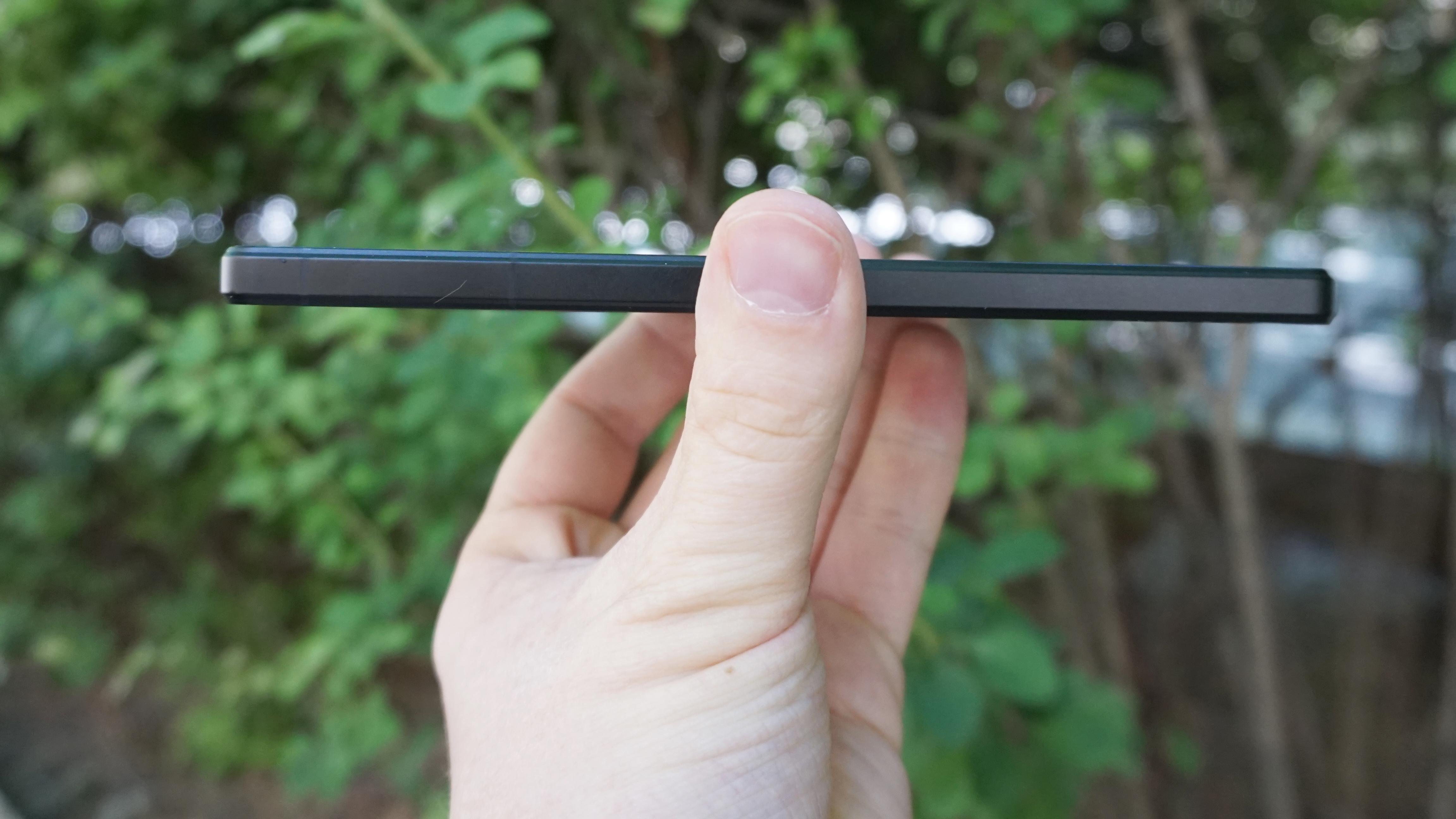
If you like extra ports and buttons on your smartphone, the Xperia 1 IV is for you. Not only does it have a USB-C port, but it’s one of the only premium phones we’ve seen in the last few years with a 3.5mm headphone jack for wired audio and microphones. Plus it has a small volume rocker, a power button with embedded fingerprint scanner, and a small camera shutter button.
We’re huge fans of this camera tool - pressing it while you’re in the camera app takes a picture, but depressing it helps you find focus, just like on a real camera. Plus, pressing it while the phone’s screen is off opens the camera app, letting you take snaps in a hurry.
We can’t give as glowing feedback on the fingerprint scanner though, as it’s incredibly temperamental. It would frequently fail to find our fingerprint, sometimes giving one of a rotating carousel of error messages, and sometimes not saying anything at all. This was despite the fact that we registered our fingerprint several times, increasing the chance of it working.
We’d estimate that the scanner failed more often than it worked, and this is a problem we’ve had in these phones since the original Xperia 1. Since so many mid-range and even budget phones have reliable side-mounted fingerprint scanners, we really can’t fathom why Sony is struggling so much.
- Design score: 3/5
Sony Xperia 1 IV display
- Long, thin 6.5-inch display
- 4K resolution is great for movies
- Brightness increase doesn't quite cut it
For the most part, the Sony Xperia 1 IV has the same display as its Mark 3 predecessor. That means it’s a 6.5-inch OLED display with a 120Hz refresh rate, 4K resolution and 21:9 aspect ratio, and as always, it looks pretty good.
Most of the time, the Xperia screen doesn’t actually hit 4K - that’s no bad thing, because you don’t need to see your horribly-compressed Instagram pictures at that aspect ratio, and that’d drain the battery fast - but this high resolution kicks in when you play games or watch videos that are higher-res, making for a great viewing experience.
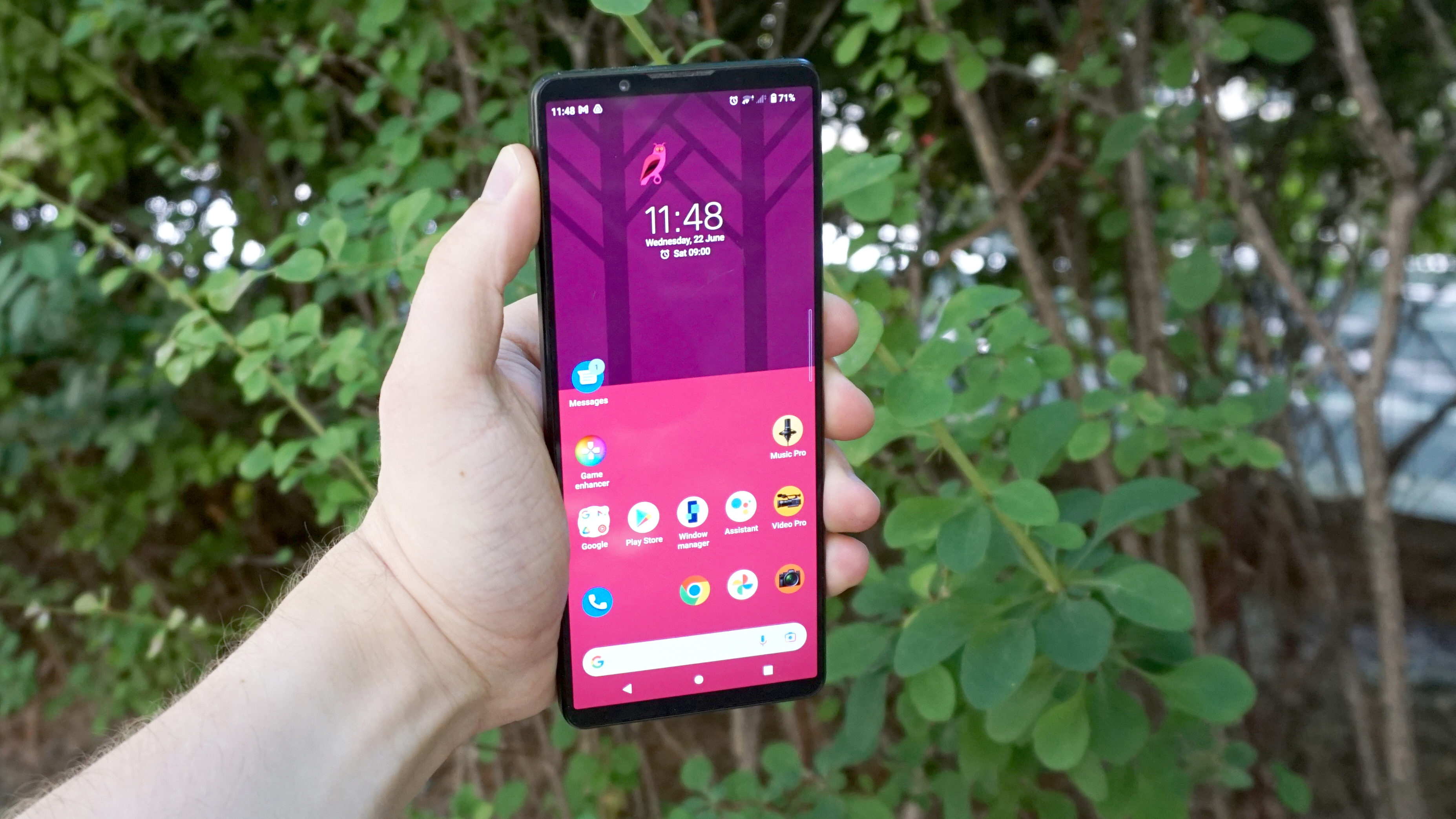
You might ask “6.5 inches? Isn’t that pretty small?” and it’s true that most high-end Android smartphones top that on paper - yet, because of the phone’s thin and long aspect ratio, it doesn’t feel that much smaller.
The main upgrade here over the last-gen Xperia is in the display brightness - Sony says the IV goes 50% brighter than its predecessor. That’s true, and it was easier to see the phone screen in bright outdoor settings than in previous versions of the handset - but we’d argue it still actually wasn’t bright enough.
On sunny days, we struggled to see the display, compared to other phones we had with us. And we live in the UK, so it’s not like it’s ever blindingly bright outdoors.
- Display score: 4.5/5
Sony Xperia 1 IV cameras
- Continuous 3.5x-5.2x camera zoom is incredible
- 4K 120fps video recording is super useful
- A few software bugs cropped up
The Sony Xperia 1 IV isn’t the best camera phone for average users who want an easy-to-use system to quickly take good-looking snaps of loved ones, pets or food. But for photography aficionados who might otherwise be considering an actual camera, it provides loads of useful features.
Of the phone’s four cameras, two are unchanged from the Xperia 1 III - these are the 12MP f/1.7 24mm main camera and 12MP f/2.2 16mm ultra-wide snappers. Oh, and the Time-of-Flight depth sensor from before is still here too.
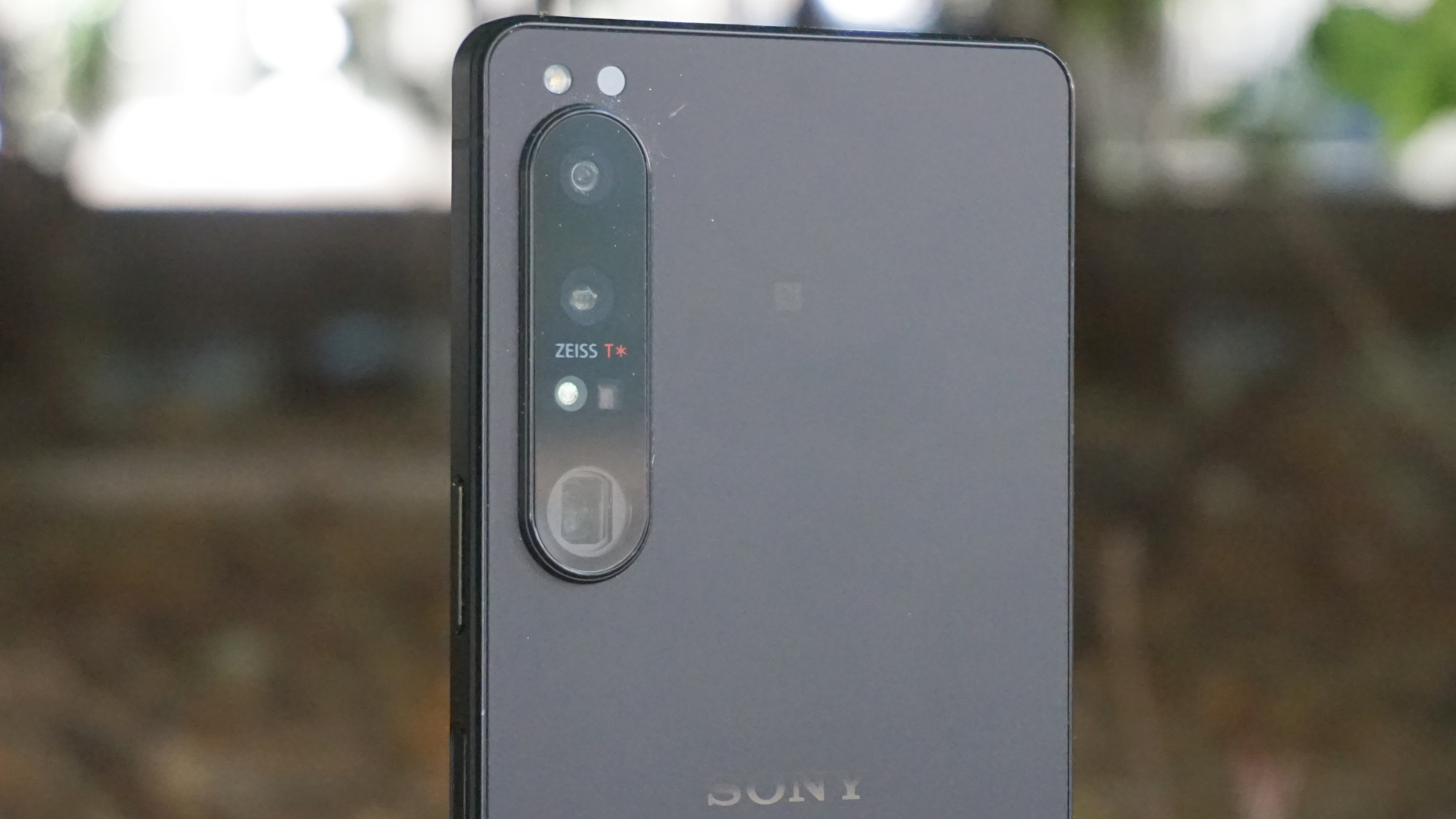
The smaller of the two upgrades is the front-facing camera, which is now 12MP f/2.0 24mm, up from 8MP on the predecessor. This improvement allows for 4K video recording, something a 12MP resolution is necessary for.
The huge upgrade here, though, is something no company has done before - continuous optical zoom. In short, it means the telephoto lens has moving components so it can seamlessly move between 3.5x (85mm) and 5.2x (125mm) zoom levels. This is a fantastic feature for people who like zoom photography, as it lets you properly line up your subject without having to rely on digital zoom (or cropping) to close the distance.
Long-range photography is popular for the depth effect that longer focal lengths offer, and this continuous optical lens gives all the benefits of a variable zoom lens on a proper camera, but from the comfort of your pocket device. We used this zoom lens loads in our tests, both for closing the distance with subjects that were far away and for getting in close with smaller subjects like animals or plants.
So we’re giving two thumbs up to this type of lens - in fact, if we had a gripe, it’s that we’d love to see more. Let’s see zoom go beyond 5.2x, let’s see a sensor with a resolution higher than 12MP (as that does rule out zooming too far beyond 5.2x).
We do have one actual issue with this continuous zoom, but it’s more of a problem with the Photography Pro app. When you bring up the zoom slider, which lets you drag the zoom level from ultra-wide, 1x zoom, optical 3.5x to 5.2x, all the way to the digital zoom limit of 15.6, there’s no special panel just for the telephoto camera’s range - this means you’re stuck seeing the figures on a wider bar, so it’s quite fiddly to find exact levels.
The main and ultra-wide cameras work similarly to how we’ve seen them in previous Sony phones - there isn’t oodles of AI optimization done here as it’s a phone designed for people who are going to edit their pictures themselves.


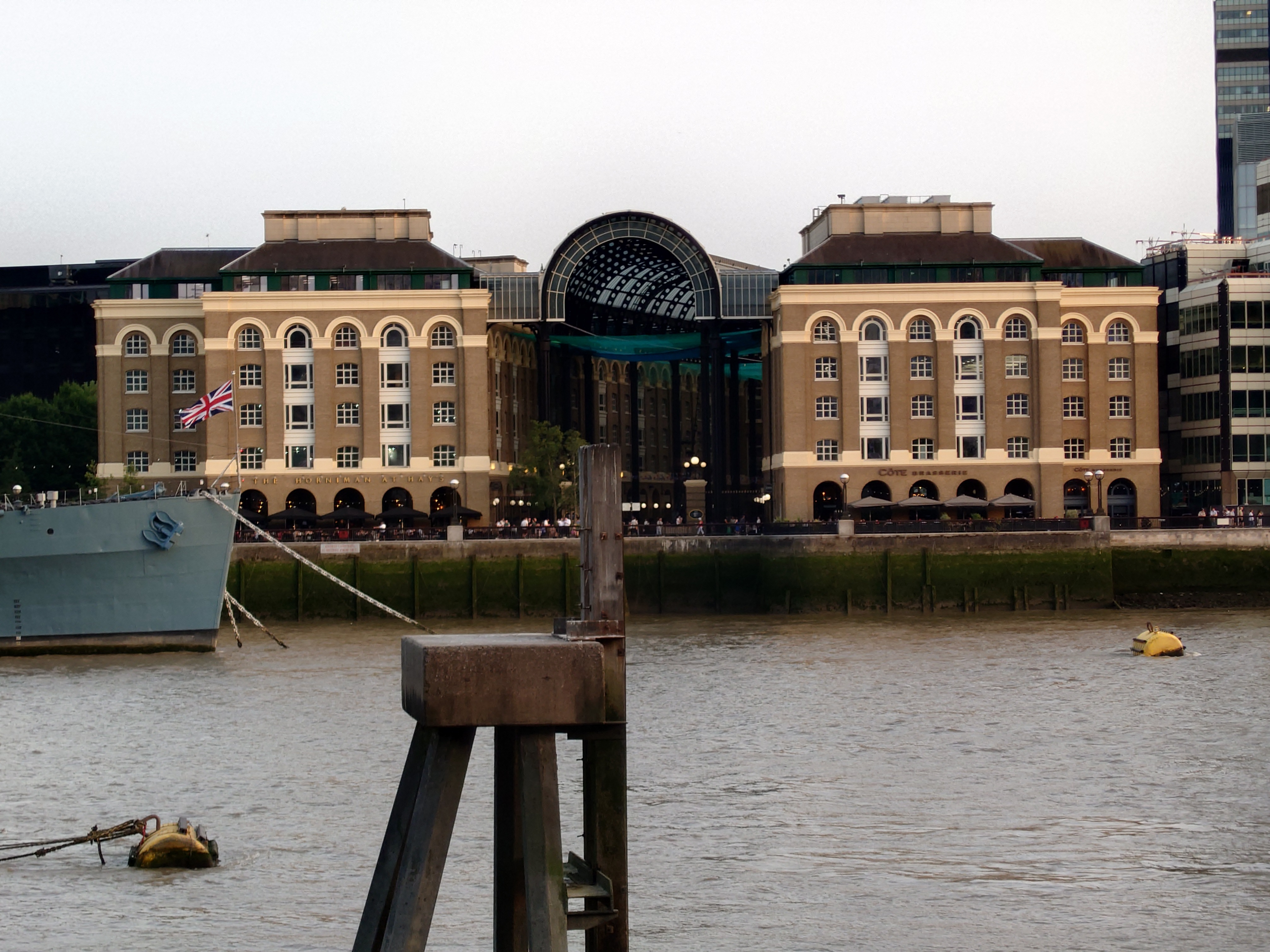
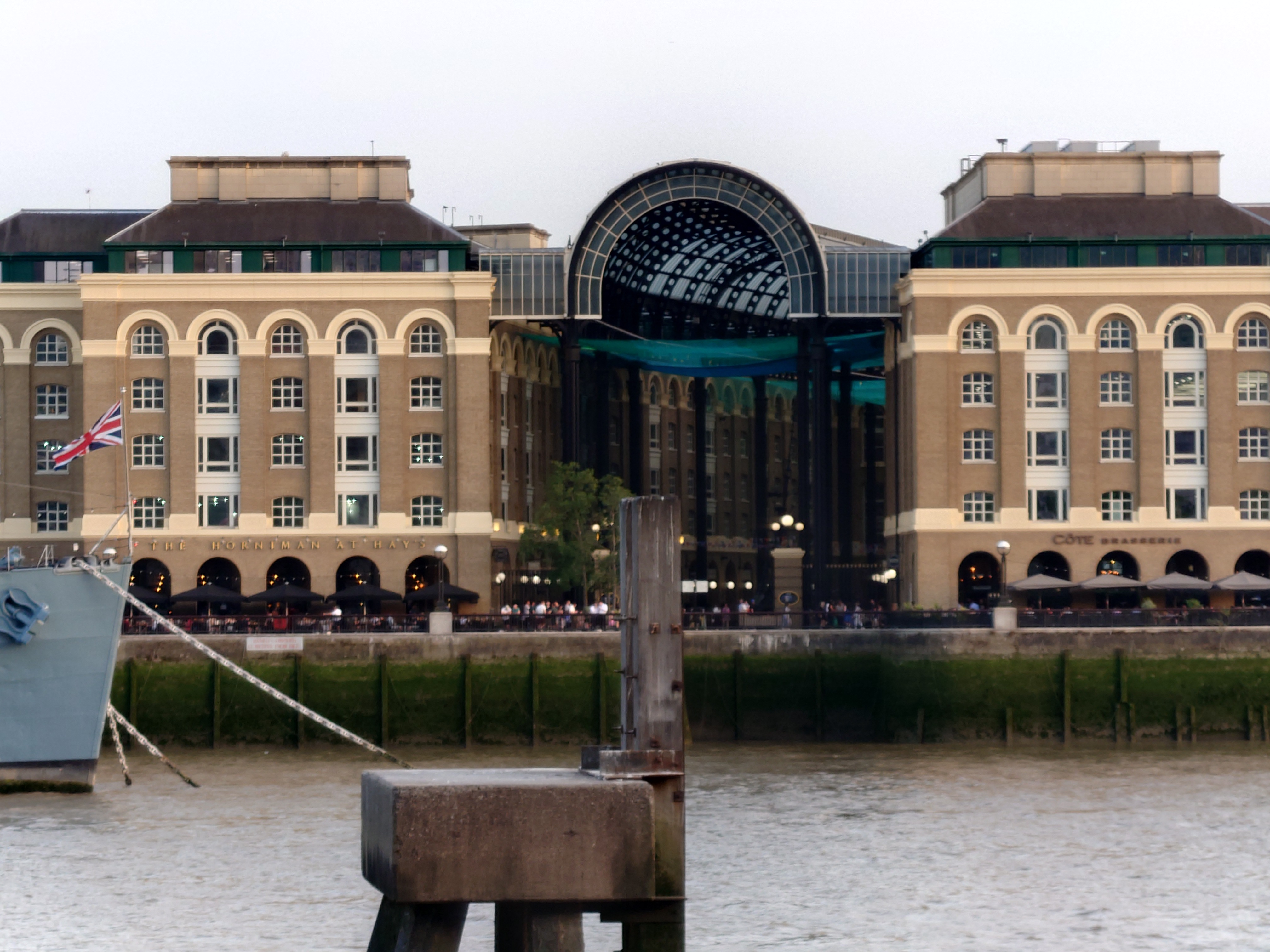

In fact, people who aren’t camera aficionados will be a bit lost here. There’s a camera-like shooting mode carousel, which lets you switch between different exposure modes and will be borderline gibberish to people who don’t already own a DSLR. If you just want an easy point-and-shoot camera phone, this isn’t the device for you.
What’s going to be really, really useful for mobile filmmakers is the ability to shoot 4K 120fps footage on any of the four cameras - this means you don’t have to rely on the main snapper if you want slow motion or high-resolution footage.
This mainly worked well, but there are some issues that limit its appeal. First, you can’t record audio when shooting at 120fps, so if you need sound you’ll have to jump down to 30fps or lower. Second, we found the telephoto camera footage sometimes had trouble focusing when we filmed at 4K, even with autofocus enabled - it’s not clear if this is an issue with hardware or software, but it was indeed an issue.
And now we’re on our list of mobile video gripes - there’s one huge one that really limits the phone’s appeal for movie-making, and it relates to video playback. When we shot a video in Cinema Pro (which we’ll detail later on), we couldn’t play it back in the app, despite there being a mini-gallery designed to let you view videos you’ve just shot.
Even when we went into Google Photos, the default photos app on Android, we weren’t able to play back footage we’d shot - we later discovered this was the same for Video Pro, another video recording app designed by Sony. In fact, we thought the footage was all corrupted, until we realized that once exported (or when viewed in the phone’s files) the videos weren’t, in fact, broken.
This could be a major issue for filmmakers who want to view back what they’ve just shot, whether it’s to check out the performance or see if potential issues were visible on film. It’s likely a software bug, but it persisted between system updates and phone resets.
- Camera score: 4.5/5
Camera samples








Sony Xperia 1 IV performance and specs
- Powerful Snapdragon 8 Gen 1 chipset
- Overheating is a serious issue
- Speakers sound great for movies
The Sony Xperia 1 IV continues the series’ tradition of using the top-end chipset available - that’s Qualcomm’s Snapdragon 8 Gen 1 in this case. We’ve seen this in loads of smartphones at this point, including the OnePlus 10 Pro, Xiaomi 12 and Samsung Galaxy S22 (in the US, for the S22, though in Europe it used a different chip).
This chip provides loads of processing power, useful for recording high-res videos or playing lots of games. At the time of the Xperia’s release, there isn’t a more powerful chip available in Android phones.
Qualcomm’s top-end chipsets do have one hot issue - literally. They’re quick to overheat when you’re doing something intensive like gaming or recording video, or even charging up. When we tried to use the Cinema Pro app (which we’ll describe in more detail later) for 4K video recording, we’d frequently have to wait for the phone to cool down to keep using it.
Overheating can have an effect on performance, and it’s a shame that Qualcomm hasn’t looked into it, as there’s a noticeable power drop when the phone heats up. In fact, we had some app crashes when the phone got too hot, a problem most noticeable in the camera app.
When it’s working well, though, the Sony Xperia 1 IV is nice and powerful for gaming, especially thanks to the 21:9 display which gives you more space to see action.
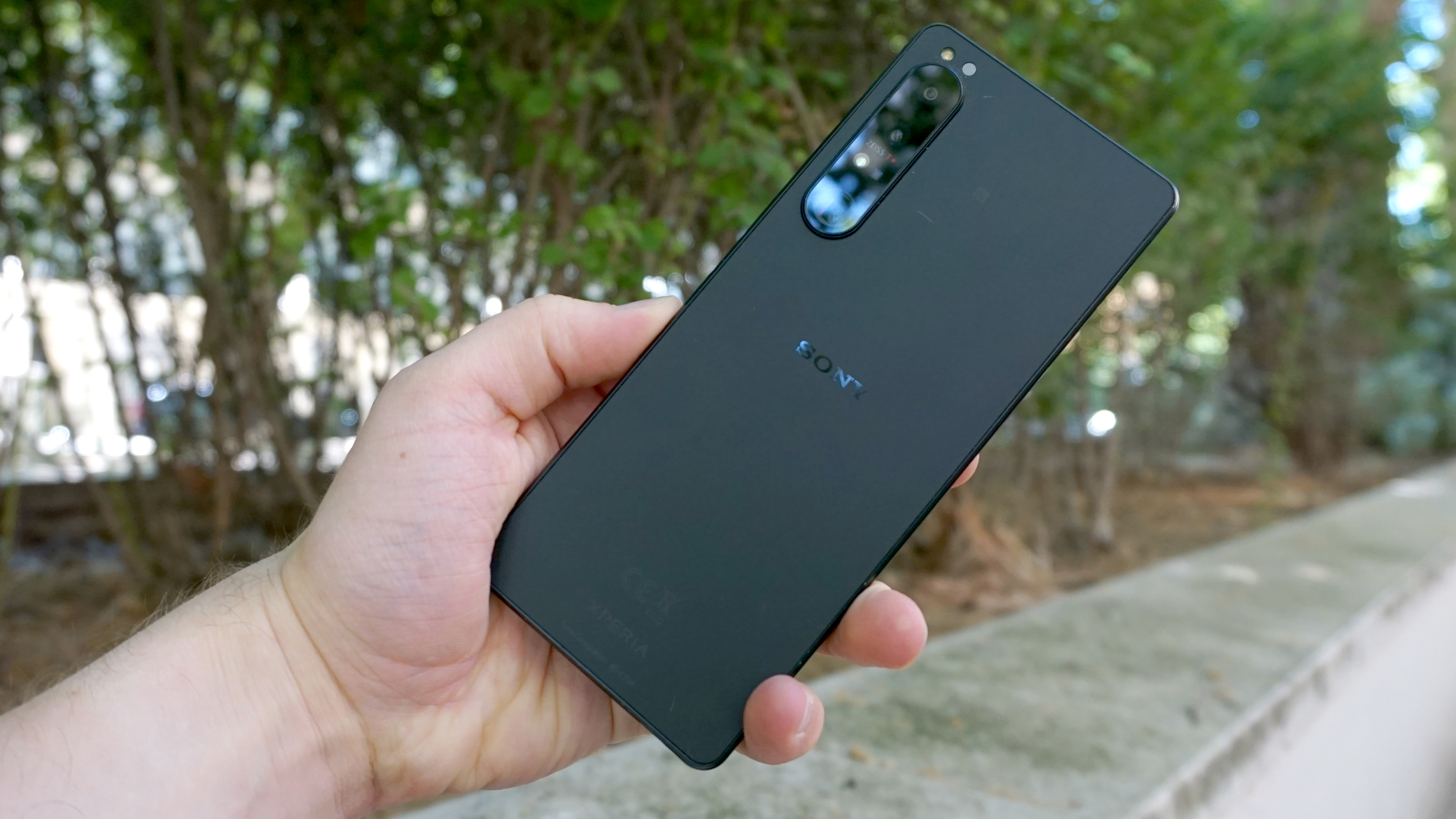
The built-in speakers are good too, and are probably the best ones we’ve seen in a smartphone that aren’t tuned by a third-party audio company. Movies sound good when played out loud, though obviously using headphones gives a better experience.
- Performance score: 4/5
Sony Xperia 1 IV software
- Runs Android 12 but will likely be upgradeable
- Stock Android has a clean design
- Most pre-installed apps are useful - but not all
Sony uses a similar software approach to Motorola: it takes stock Android, as designed by Google, and adds a few extra tools. In the Xperia 1 IV, that’s Android 12 you’re getting, though without the update’s signature Material You customization tool.
Stock Android works well here, as its clean look complements the spacious screen. Well, it’s mostly clean, though there are a fair few pre-installed apps on the phone. However, unlike on your standard cheap Chinese phone, these aren’t third-party additions but mostly super-useful Sony tools.
These include Photo Pro (a top-end equivalent of the ‘standard’ Photo app), Video Pro (the same, but for video recording), Cinema Pro (for recording video similar to on a Sony Alpha camera), Music Pro (for recording, mixing and layering voice and music on the phone, though it only works with the in-built microphone), Bravia Core (a streaming service for Sony devices, which includes five streams of new movies and unlimited streaming for select older ones) and Headphones (Sony’s app which controls its Bluetooth headphones).
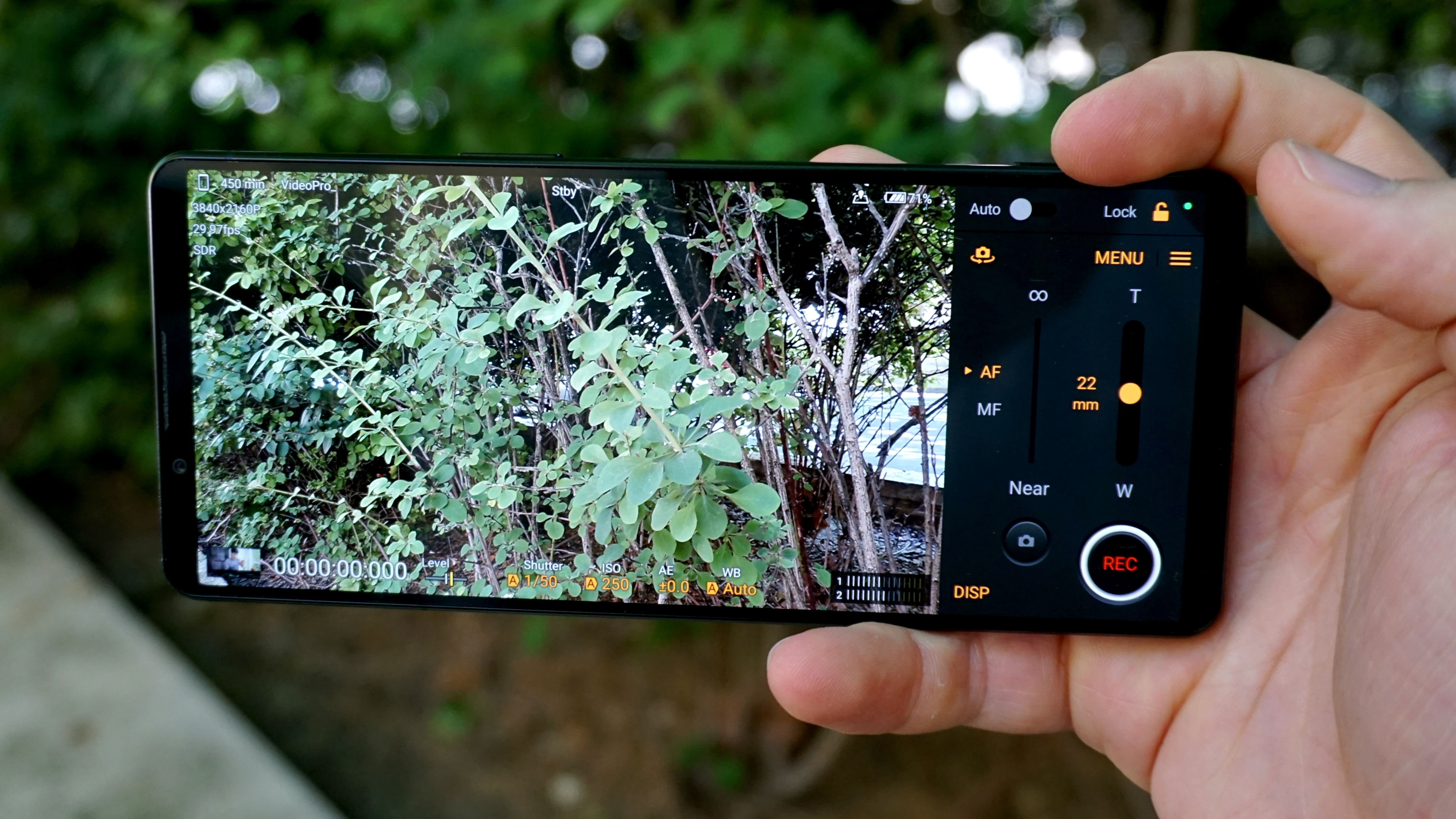
Some of these are incredibly useful for creative types. Photo Pro feels like a Sony camera with its depth of features, even down to the mode carousel that lets you choose between modes like Programme auto, Manual exposure and the standard Basic mode. Cinema Pro gives you a huge amount of control over cinematic video to let you shoot movies on your phone.
There are lots of built-in tools for capturing content, but Music Pro is one of the rare ones that actually let you edit what you capture. We’re hoping future Sony phones introduce ways to mix or edit photo and video.
We liked Bravia Core - it let us catch up on all the Sony movies we’d missed in the past few months (finally giving us a chance to see Uncharted!). But with no download function, and the phone having to stream 4K video to play, we found it kept buffering through each film.
There are select third-party apps built in, and they mostly fit within the phone’s remit of an entertainment device - there’s Tidal, Prime Video and Netflix, for example, with Booking.com, Amazon Shopping and LinkedIn being the three disappointing outliers that shouldn’t be on the device.
Thanks to its tall display, the Sony is really useful for multitasking, as there’s enough space to put two apps side-by-side, and the refresh rate also makes navigating the phone’s menus feel smooth.
- Software score: 4/5
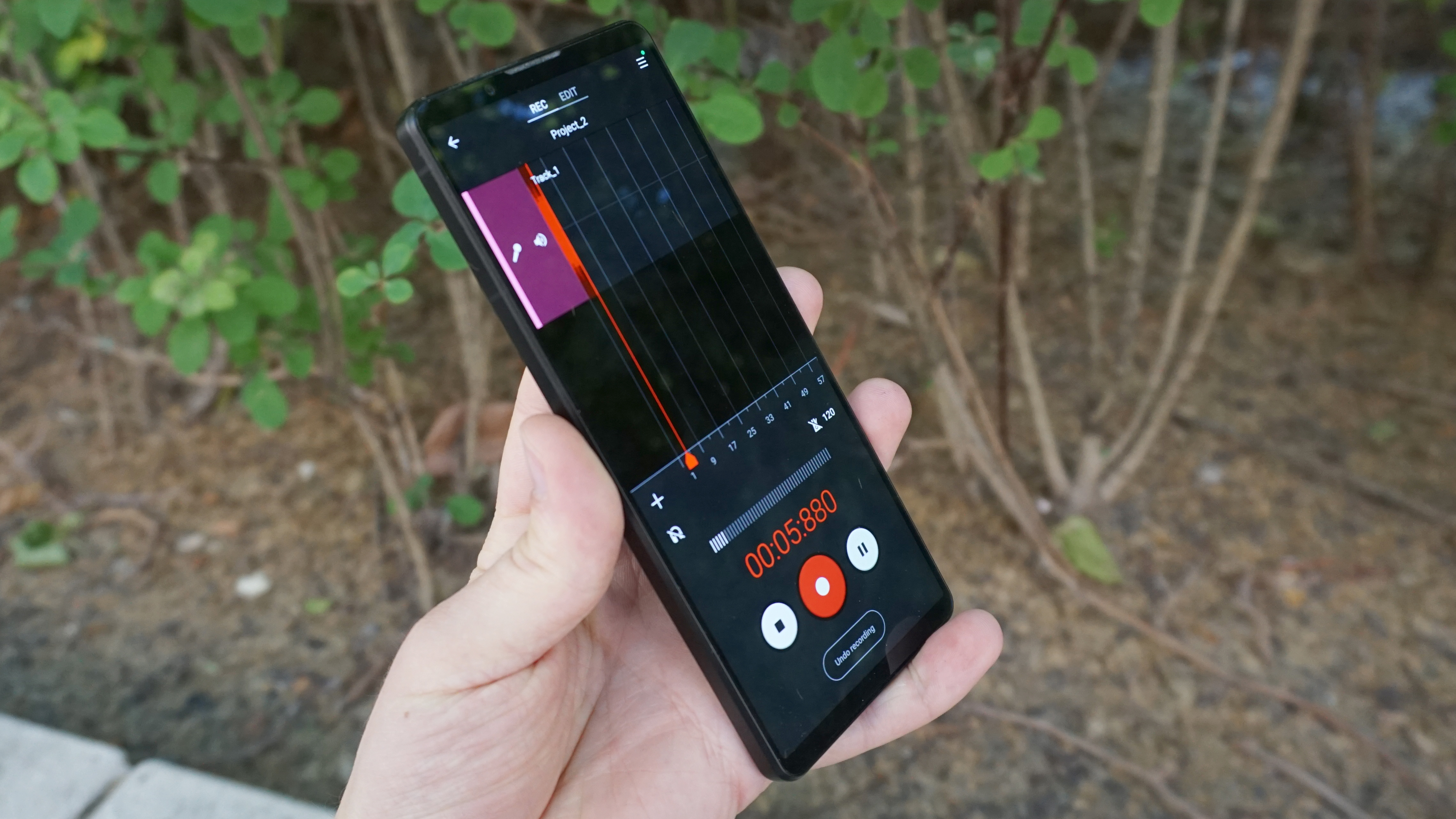
Sony Xperia 1 IV battery life
- Big 5,000mAh battery
- Admirable longevity even with intensive tasks
- Slow to charge at only 30W
A welcome upgrade the Mark 4 Xperia gets from its Mark 3 predecessor is in the battery capacity, with a 500mAh bump taking the power pack to 5,000mAh. We actually complimented the Xperia 1 III’s battery life in our review, but bigger is always better.
Despite having a fairly large 4K screen, constant 5G connectivity and lots of background apps running all the time, we were consistently impressed by the Xperia’s battery life. It reliably saw us through a whole day of standard use, whether that meant a quick check of social media now and then, regular texting, Google Maps use and music streaming.
That wasn’t the case when we used the Xperia for some of its Pro features, as you’d expect - we couldn’t spend hours recording 4K video and expect it to last through the day. But even through intensive periods it continuously impressed us.
Charging speed is a little less impressive though. Sony decided to stick with the same 30W wired charging that it used in previous flagships, and given that some phones in 2022 go all the way up to 150W, that’s just far too slow. Sony states this speed is to stop the battery health deteriorating as quickly, and that’s a fair reason, until you consider that some fast-charging phones have methods to stop the super speeds from ruining the battery.
There’s also wireless charging here, though it’s even slower than wired, as well as reverse wireless powering so you can juice up other wireless-powering gadgets using the phone as a power mat.
- Battery score: 4/5
Sony Xperia 1 IV review scorecard
| Attributes | Notes | Rating |
|---|---|---|
| Design | With its angular and arguably outdated design, the Sony Xperia 1 IV won't exactly turn heads. | 3/5 |
| Display | Sony's the only company putting out 4K display phones right now, and it gives it the edge for streaming movies. | 4.5/5 |
| Performance | While the Xperia does have a top-end chipset, overheating issues cause it to lose points. | 4/5 |
| Camera | Sony makes some of the best camera phones, and the continuous optical zoom is a great example of why. | 4.5/5 |
| Battery | The Sony will outlast most of its close rivals with its lasting power, though it loses points for slow charging. | 4/5 |
| Software | Sony's clean Android operating system and useful extra apps gain it lots of points here. | 4/5 |
| Value | Even with all its merits, it's hard to recommend the Xperia for everybody when it costs this much. | 2/5 |
Should I buy the Sony Xperia 1 IV?
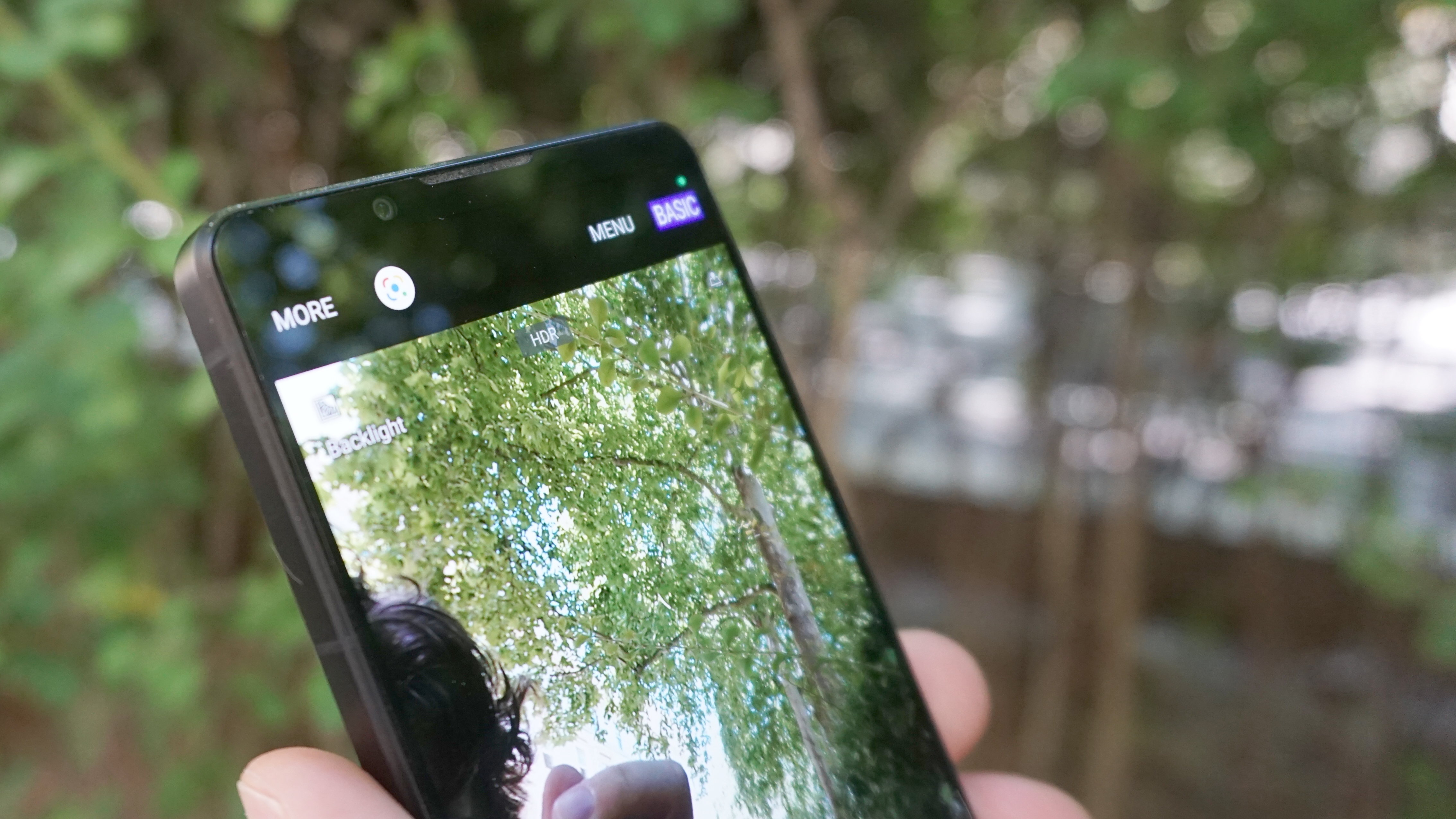
Buy it if...
Don’t buy it if…
Also consider
Now you've read this Sony Xperia 1 IV review, here are some other phones which might also interest you.
- First reviewed June 2022
0 comments:
Post a Comment